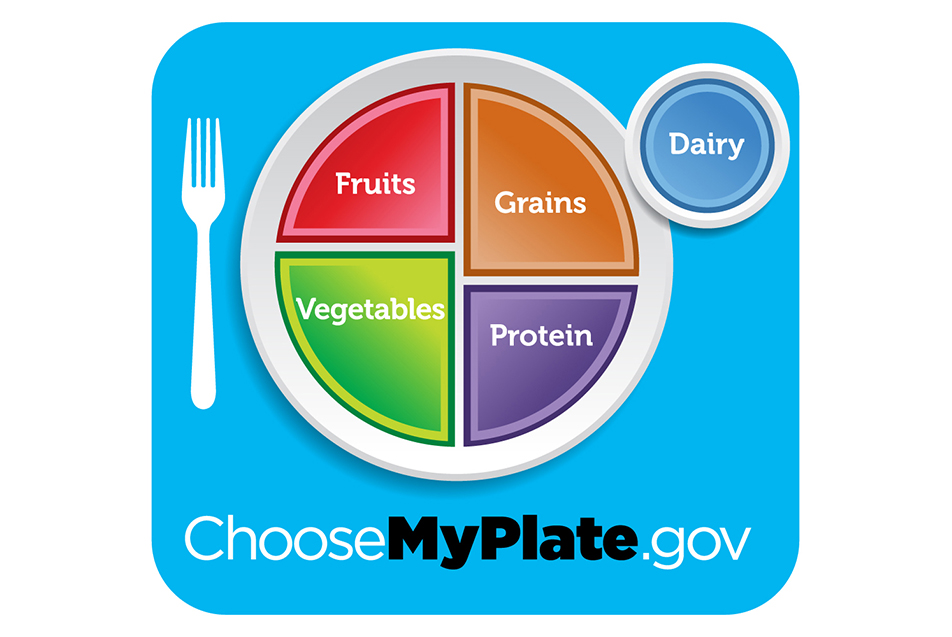
This post was written by Lauren Mullins, RDN, CD, Parkview Health.
As adults, we know the effects consuming healthy foods, engaging in regular physical activity and maintaining a healthy body weight have on our overall wellness. Making suitable life choices can help prevent future health problems and prolong our lives. Modeling healthy lifestyle habits will not only benefit you as you age, but will also serve as an example for your children. Focusing on a diet that includes a variety of fruits, vegetables, lean protein sources, low fat dairy and whole grains will encourage healthy choices for everyone in the house.
When trying to influence change and implement healthy habits, you want to keep it simple and focus on the most important things: increase physical activity, decrease sedentary activity, make a family-based change and focus on a portion-controlled eating plan. Just like adults, children and adolescents need to consume foods and beverages that are packed with nutrients while balancing calories consumed with physical activity.
Portions matter
Children ages 2 and older are encouraged to consume fruits, vegetables, unsalted nuts and seeds, whole grains, fat free or low fat dairy products, and a variety of protein rich foods such as seafood, lean meats such as chicken or fish, eggs, legumes and soy products. Adults as well as children are encouraged to limit their intake of refined grains, added sugars, saturated fats commonly found in lard, butter and margarine, and salt.

ChooseMyPlate is a wonderful online resource endorsed by the USDA that provides a wealth of knowledge and resources to adults and children who want to learn more about nutrition, portion control, dietary guidelines and ways to improve overall wellness, no matter the age group. It focuses on five main food groups that include fruits, vegetables, grains, protein and dairy. The website provides links to explore tips and recommendations for each food group. For example, when exploring information about fruit, you will find that the daily recommendation for fruit depends on age, gender and physical activity level, and needs vary between 1-2 cups of fruit per day. Tables and charts can help you determine what qualifies as a serving of fruit. In general, I cup of fruit or 100% fruit juice, or ½ cup of dried fruit can be considered as 1 cup from the fruit group.
Offer choices
When encouraging healthy habits for young children, it’s important to offer a rainbow of choices. Fruits and vegetables can be quick and easy ways to make meals and snacks healthier and more colorful. Avoid fruits canned in heavy syrup and limit fruit juice as it does not contain the dietary fiber found in other forms of fruit.
Kids love to dip their fruits and veggies. Making a yogurt-based dip with herbs and spices can make eating vegetables more fun. Make sure at least half of your daily grain intake is from whole grains. This means offering 100% whole-grain cereals, breads or pastas at meals rather than enriched, white starches. Whole grain products include rolled oats, oatmeal, brown rice, while rice, quinoa, wheat berries and millet.
Protein sources are encouraged at every meal. Children can choose from a variety of protein-rich foods such as seafood, beans, lean meats, poultry and eggs. High fat protein sources such as cold cuts, sausage, bacon, bologna and salami should be limited.
The fifth and last food group on MyPlate is dairy. When choosing dairy products to offer your child, serve fat-free and low-fat milks, as they tend to have less sugar and calories than flavored, whole or reduced-fat milk. Dairy products such as milk, cheese and yogurt provide much needed calcium. They can be used to make a fruit smoothie for a snack or a dip for fruit to accompany a meal.
Get everyone involved
Make cooking and meal preparation fun by involving your kids in the process. Children may be more willing to eat the dishes they help prepare. Limit eating at home to specific areas such as the kitchen or dining room, and avoid the TV or other screen time while eating.
When introducing new foods to your child, they may refuse a food based on a certain color or texture. This is completely normal! Picky eating is usually temporary and should be handled in a positive way. Let them pick out their favorite fruits and veggies at the store, encourage tasting the new food item rather than clearing their plate, and let them see you enjoying the new food item.
Nutritional needs for toddlers and young children are highly individualized, but with encouragement and setting a good example of healthy eating and exercise, healthy habits can be formed at an early age. For more information and resources to assist in meal planning and involving your children in choosing a healthy lifestyle, visit Choosemyplate.gov and the National Institute of Health.



